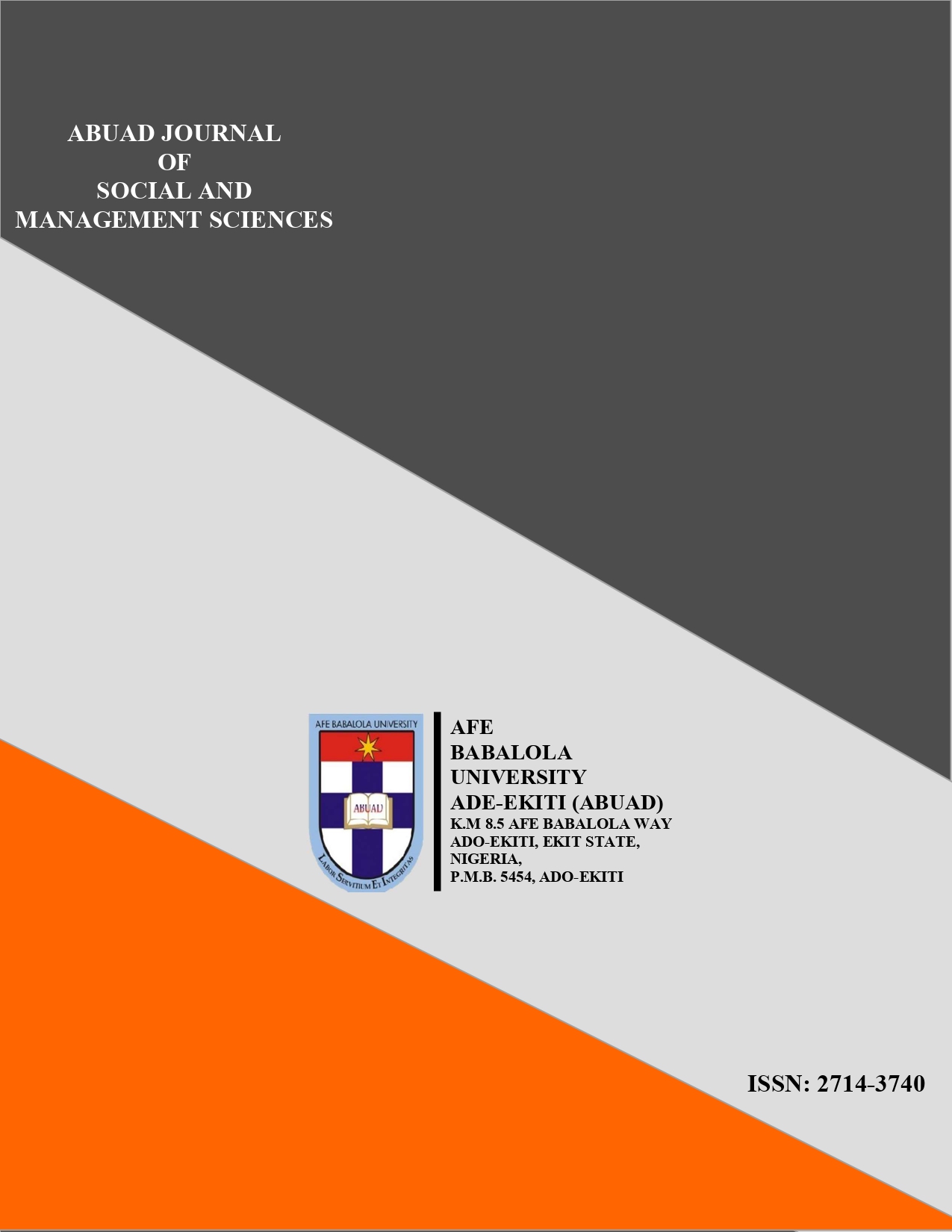Assessment of Freight Movement in the Inland Waterways System in Lagos Metropolis, Nigeria
Main Article Content
Abstract
The high dependence on land transportation for the movement of both passengers and freight within the Lagos metropolis is not sustainable. The advocacy for the use of Lagos waterways for freight movement must be encouraged. In achieving this, there is the need to document necessary information about water transportation. This study is therefore intended to identify the determining factors for the use of water to move freight on the inland waterways within the Lagos metropolis. Both primary and secondary data were adopted for the study. The primary data was sourced using a structured questionnaire targeting ownership/management of the marine craft (i.e., private, public, or public/private). The respondents included 47 registered members of Barge Operators Association of Nigeria (BOAN). The secondary data were sourced from the records of BOAN focusing on the details of boats and operators. Frequency distribution and charts were used for presenting and summarizing the data, whereas, the multinomial logistic regression model was employed to test the formulated hypothesis The multinomial logistic regression results show that the determinants of the choice of water route were freight availability (Odd Ratio: 3.257), freight (Odd Ratio: 2.350), and availability of transshipment facilities (Odd Ratio: 2.159). Availability of transshipment facilities had positive and statistically significant relationships with the choice of water route (r=0.86). This study, therefore, recommends that the state government should take necessary steps to improve the inland water transport system in Lagos state.
Downloads
Article Details

This work is licensed under a Creative Commons Attribution-NonCommercial-ShareAlike 4.0 International License.
Authors hold the copyright of all published articles except otherwise stated.
References
References
Aiyegbajeje F. O., and Deinne C.E., (2021) Assessment of Commuters’ Perception of Water Transportation Safety and Patronage in Lagos Metropolis. Ghana Journal of Geography Vol. 13 (3), 2021 pages 146-164.
Akinbamijo O., Ipingbemi O., and Bayode T., (2016) In-Land Water Based Transport in Lagos State: Challenges and Remedies. Joint International Conference on 21st Century Human Habitat: Issues, Sustainability and Development, Nigeria
Asborno, M. I., & Hernandez, S. (2021). Assigning a commodity dimension to AIS data: Disaggregated freight flow on an inland waterway network. Research in Transportation Business & Management. Article 100683.
Balogun, K.J., Ladigbolu, I.A., Ariyo, A.A. (2011) Ecological Assessment of a coastal shallow lagoon in Lagos, Nigeria. J. Appl. Sci. Environ. Manage. Vol. 15 (1) 41 - 46
Browne M., Allen J., Niemoto T., and Patier D. (2012) Reducing Social and Environmental Impacts of Urban Freight Transport: A Review of Some Major Cities, Procedia-Social and Behavioral Sciences Vol: 39:19-33
Bu, F., & Nachtmann, H. (2021). Literature review and comparative analysis of inland waterways transport: Container on Barge. Maritime Economics & Logistics, 1–34.
Chowdgury, A., Paijwar, A., Singh, A (2024) Inland Water Transport Viability Assessment through Literature Review Techniques. Pramana Research Journal. Vol. 14 (5):19-31
Durajczyk P., and Drop N. (2021) - Possibilities of Using Inland Navigation to Improve Efficiency of Urban and Inter-urban Freight Transport with the Use of the River Information Services (RIS) System—Case Study. Department of Maritime Economy and Transport Systems, Maritime University of Szczecin, Poland.
Hjelle, H.M., and Fridell, E. (2012) “When is short sea shipping environmentally competitive” in Environmental Health, Jacques Oosthuizen, Ed., Rijeka: Intech open.
Jiang, P., Tong, S., Wang, Y., & Xu, G. (2021). Modelling the oil spill transport in inland waterways based on experimental study. Environmental Pollution, 284, Article 117473.
Mako, P., & Galierikovk, A. (2021). Inland navigation on the Danube and the Rhine waterways. Transportation Research Procedia, 55, 10–17
Özdemir, Ü. (2022) “A quantitative approach to the development of ballast water treatment systems in ships,” Ships and Offshore Structures, pp. 1-8
Özdemir, Ü. (2018) “Analysis of empty container accumulation problem of container ports,” Journal of ETA Maritime Science, Vol. 6:319-332.
Rogerson, S., Santén, V., Svanberg, M., Williamsson, J., and Woxenius, J. (2020) “Modal shift to inland waterways: dealing with barriers in two Swedish cases,” International Journal of Logistics Research and Applications, vol. 23, pp. 195-210, 2020.
Singh, M., and Pant, M., (2021) “A review of selected weighing methods in MCDM with a case study,” International Journal of System Assurance Engineering and Management, Vol.12:126-144.
Solomon, B., Otoo, E., Boateng, A., & Koomson, D. A. (2021). Inland waterway transportation (IWT) in Ghana: A case study of Volta Lake transport. International Journal of Transportation Science and Technology, 10(1), 20–33.
Totakura, B.R., Narasinganallur, N., Jalil, S.A., Ajith, P.J. (2022) Factors Affecting Container Shipping Through Inland Waterways. Journal of ETA Maritime Science 10 (3):156-167
Trivedi, A., Jakhar, S.K., and Sinha, D. (2021) “Analyzing barriers to inland waterways as a sustainable transportation mode in India: A dematel-ISM based approach,” Journal of Cleaner Production, Vol. 295, pp. 126301
Venkatesh, V.G., Zhang, A., Luthra, S., Dubey, R., Subramanian, N., and Mangla, S. (2017) “Barriers to coastal shipping development: An Indian perspective,” Transportation Research Part D: Transport and Environment, Vol. 52: 362-378
Wiegmans, B., and Konings, R. (2015) “Intermodal inland waterway transport: modelling conditions influencing its cost competitiveness,” The Asian Journal of Shipping and Logistics, Vol. 31: 273-294.
Yang, X., Low, J.M., and Tang, L.C. (2011) “Analysis of intermodal freight from China to Indian Ocean: a goal programming approach,” Journal of Transport Geography, Vol. 19:515-527
Young-Seo C., and Gi-Tae, Y. (2023) An analysis of research trends of inland waterway utilizing social network analysis. The Asian Journal of Shipping and Logistics 39 (2023) 52–59
Yu, K., Wang, Y.J., Moberg, C.R., and Cruthirds, K.W. (2013) “Adopting roro transportation in inland China: a decision criteria survey of shippers, forwarders, and haulers,” International Journal of Logist




